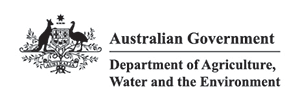Taking yield forecasting into the digital age

This project is supported by funding from the Australian Government Department of Agriculture, Water and the Environment as part of its Rural R&D for Profit programme.
Dr Joanna Jones’s latest research is very much a project whose time has come.
For the past 15 years, she has been working with Tasmanian grapegrowers at pruning time, using her expertise in reproductive biology and knowledge of bud fertility to help them make the decisions to achieve optimum yield in the coming season. It’s an inexact science, however, and can be costly and time consuming.
Dr Joanna Jones with Dr Bob Dambergs and Dr Thomas Rodemann.
For the past five years, she has had plans on paper to take yield forecasting into the digital age. Thanks to Wine Australia’s digital viticulture priority area, those plans are now a reality. And while success is not a given, the early results are encouraging.
The aim of the project – which is supported by funding from the Australian Government Department of Agriculture, Water and the Environment as part of its Rural R&D for Profit programme – is to use infra-red technology to determine bud fruitfulness and then create a simple tool that growers can use to store and translate data. It’s a complex project that involves a mix of skill sets.
Dr Jones, who is part of the Grape and Wine Science Group at the Tasmanian Institute of Agriculture, is working closely with Dr Thomas Rodemann, who is a specialist in spectroscopy, and Dr Bob Dambergs, who has extensive knowledge in the application of spectroscopy to novel applications.
‘Between them they also have some pretty awesome modelling knowledge and experience’, she said.
The first stage of the project, which began last August, was to validate that the scanning technology could find the right mass of tissue and give a reading. Buds are protected by a woody scale on the outside and there is also lots of developing leaf tissue and protective hairs in the way.
‘We have been looking at different treatments of pulling scales off and leaving scales on, to make sure we are picking up the right mass inside the bud’, Dr Jones said. ‘We then ground truth that with actual bud dissections under the microscope, as you would traditionally do them. The results are looking promising.
‘We then need to look at all sorts of other parameters that can affect bud fruitfulness; for example, can we only detect the number of bunches or would we be able to detect their approximate size? We need to see if these parameters can strengthen the model, or will just complicate it.’
One of the challenges is that to create a tool that is applicable and valuable to the sector. The testing needs to be done at pruning time. ‘It gives us a short window each year to collect data. In the true style of agricultural research, we are confined by seasons.’
Alongside the research, the team is talking with growers in the field about how to best utilise whatever solution they develop. The growing use of Near Infrared (NIR) scanning devices by some wineries offers great potential.
For Dr Jones, the buzz is in hopefully finding a way to help growers deal with the real problem: the year-to-year fluctuations in bunch numbers.
‘It puts pressure not only on their bottom line in terms of the yields that they can achieve, but also down the chain in intake scheduling in the winery, and even marketing and sales’, she said. ‘Being able to more accurately predict the yield that is coming their way can only be good.’
